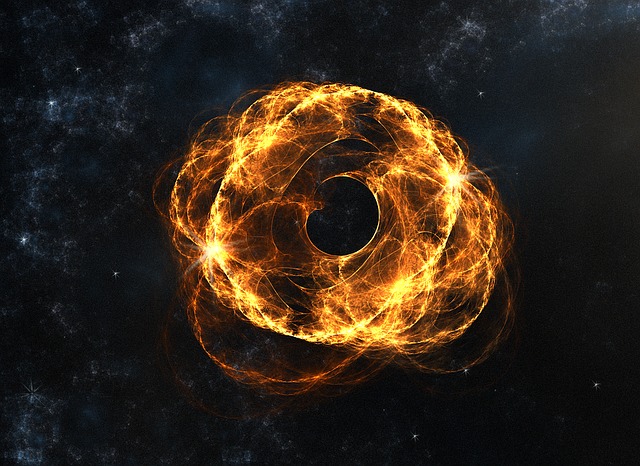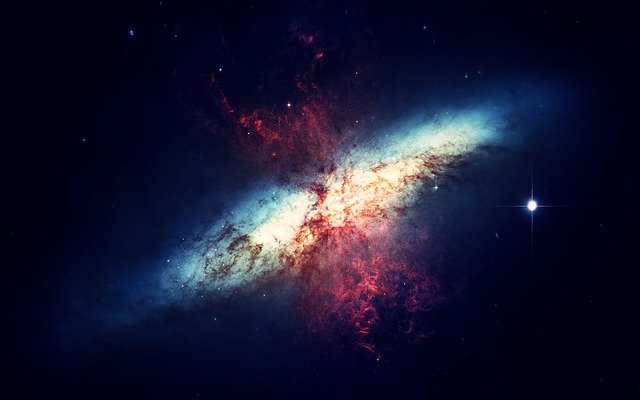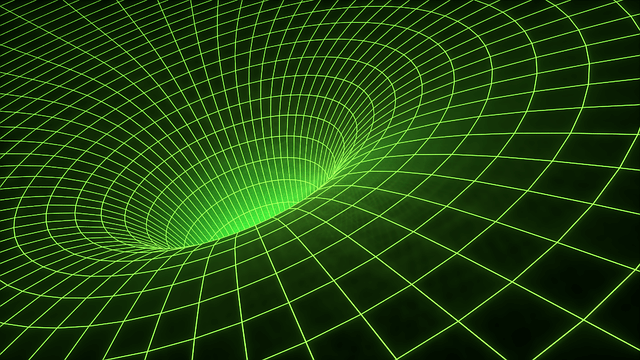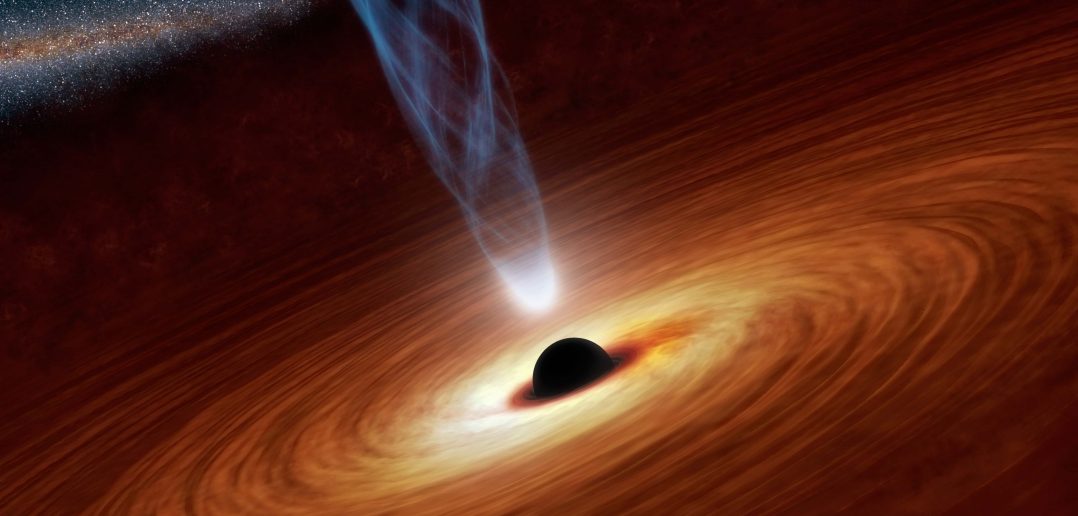The formation of black holes is one of the most curious subjects of those who are closely interested in the universe and especially in space and astronomy.
Black holes can be summarized as large gravitational fields from which no matter or radiation wave traveling in the vast space can escape. Black holes, which have been the subject of many science fiction novels and films from the past to the present, are described as one of the mysterious figures of space. Essentially, black holes are dead stars that have expired. In this article, you can find all the details you need to know about what the space figures called black holes are and how they came to be.
What is a Black Hole?
When the definition of black holes is made, in the most general and descriptive terms, black holes are areas with such a large mass that no matter in space can escape. Black holes, also known as dead stars, are the only areas in space where even radiation cannot escape. Black holes, which are stars that have reached the end of their lifespan and have run out of energy, appear when a massive star collapses on itself when its primary fuel runs out. According to the researches made in space, many different black holes have been seen in the investigations carried out until today and their positions on space-time have been determined.

Source: pixabay.com
How Do Black Holes Occur?
The formation of black holes is an intriguing topic. One of the most curious subjects is how black holes, which have huge gravitational fields from which even radiation and light cannot escape, are formed.
In order to explain this, first of all, it is necessary to understand well what kind of life the star has. Because we mentioned earlier that black holes are dead stars. That’s why you can envision a star as a giant thermonuclear reactor. The fuel required for the operation of this thermonuclear reactor is the fusion reactions that take place in the core of the star.
Fusion reactions are a spontaneous process in the core of every star. In such reactions, elements with smaller atomic numbers, such as hydrogen, come into action with each other.
Hydrogens fuse with each other in the core of the star, turning into elements made up of larger atoms such as helium. During this fusion, called fusion, a lot of energy is emitted from the elements. The energy in question pushes the atoms inside the star outwards, towards the vacuum of space.
Despite this thrust, there is another force that prevents the star from dispersing and disappearing in the space-time plane like a dust cloud. Again, the gravitational force emanating from the core of the star comes into play at this point. Therefore, this force, which is realized in an inward direction between atoms, provides balance by pulling back the atoms pushed outward by the fusion reaction. In this way, the stars manage to stay in a state of balance, which is called hydrostatic equilibrium in scientific terms.

Source: pixabay.com
Disruption of Hydrostatic Equilibrium in Black Hole Formation
Hydrostatic equilibrium tends to be disrupted as black holes form . In this process, the fusion reaction, that is, pushing the atoms out of the star, is not a process that takes forever. Stars are formed from the gas and dust cloud that formed in space before them.
These gas and dust clouds, called nebulae, are dust clouds scattered by stars that have expired before. There are certain proportions of hydrogen atoms in this gas and dust cloud.
Since the number of atoms in question is certain, after a while, when the amount of hydrogen that the star can consume reaches the end, the star is considered to have consumed all its fuel. In this process, the fusion reaction gradually slows down, but there is no slowdown in the gravitational effect that provides the balance of the star. Therefore, the increasingly dominant gravity disrupts the hydrostatic balance and the star begins to collapse into itself.
Formation of Black Holes
The formation process of black holes is accelerating since the hydrostatic balance of the star is disturbed. As the heavy elements in the star’s body begin to collapse inward, changes occur in the atoms.
Electrons orbiting the atoms come closer to each other. With this approach, atoms begin to repel each other. When the said thrust overcomes gravity at a strong point, the star explodes with tremendous force. These explosions are known as Supernovas in space sciences and the larger ones are called Hypernovae.
After the occurrence of the supernova, large amounts of energy and atoms are scattered into space. As these atoms disperse into space, they form nebulae of dust and gases. Nebulae are a kind of birth house that allows new stars to form with the gravitational principle. Just as in the balance between life and death in nature, the dust of a dead star causes the life of a new star in the balance of space.
However, after the supernova, only matter trapped in the core remains of the star. In some cases, these materials form new stars, which are named differently. Sometimes it creates black holes. If the mass of the star that collapses and explodes on itself is above a certain limit, black holes will appear instead of a new star, as the density will reach incredible levels.
Black holes, which have the capacity to bend the space-time fabric that make up the universe much more than normal mass objects, have a gravitational force that even radiation cannot escape.

Source: pixabay.com
Density of Black Holes
The density level of a black hole is a rather difficult subject to understand. However, by exercising your imagination, you can grasp how intensely gravitational black holes have. Imagine a mass millions of times greater than the Sun. When you fit or compress all of this mass to the surface of the city you live in, you can realize the density of black holes.
As you will remember from physics lessons, density is a value obtained by dividing mass by volume. From this point of view, while density is directly proportional to mass, it is inversely proportional to volume. Gigantic celestial bodies such as black holes, which are not difficult to spot in space, have extremely large masses, but have extremely small volumes. This means an inconceivable density.
Why Are Black Holes Black in Color?
The black color of black holes brings with it a lot of controversy. Since the light reaching the black holes is also affected by the gravitational force, there is no reflection of the light back. Because light cannot escape from the horizon of black holes, when you look at a black hole in space, you can only see a black mass, as the name suggests.
In fact, black holes are not black in color. Because you can’t see anything there, you can say that the thing you detect with your eyes is a black hole. Therefore, black holes are black because they reflect no light back to the observer looking at them.
With careful observation, it is possible to see black holes. The indirect effects of black holes were first observed by the Hubble Telescope. The stars around these huge gravitational fields have been observed to exhibit strange movements. Then, in 2016, gravitational waves that should have formed as a result of black holes colliding with each other were detected and recorded for the first time.
In this way, it has been possible to take an important step towards proving the existence of black holes based on experiments and observations. Research on black holes finally peaked in 2019. By photographing black holes for the first time, scientists succeeded in proving that black holes exist within the scope of the predictions of the Theory of Relativity.
How Big Should a Black Hole-Creating Star Be?
The magnitude of the star that creates a black hole can vary. Because not every black hole is formed as a result of a star consuming its fuel. If that were the case, countless black holes would have to be seen in the universe.
This mass limit is called the Chandrasekhar Limit. This mass, which is thought to be 1.5 times as much as the Sun, can be up to 3 times in some cases.
In other words, a star that has the potential to form a black hole in outer space must have a mass of at least 3 times the mass of the Sun. According to studies, stars with less than this mass limit leave a white sphere of light when they consume their fuel and die. Such stars are called white dwarfs in space science.
During the formation of white dwarfs, the outer parts of the star scatter into space and form planet-forming nebulae. Planets, including our Earth, form in these clouds of gas and dust.
What Happens If We Fall Into A Black Hole?
The subject of falling into a black hole is a subject that is the material of many science fiction novels and even movies, especially in popular culture. In the light of scientific studies, comprehensive information has not yet been obtained about what happens inside black holes or what kind of events occur inside these massive masses. However, as the Theory of Relativity tells us, some theses can be put forward about what kind of process happens inside black holes. An astronaut who is near celestial bodies with high gravitational forces, such as black holes, will be under the influence of base forces called tidal forces.
According to these forces, different parts of his body will be subjected to different gravitational forces. The feet of an astronaut who first fell into the black hole with his feet will be exposed to more gravitational force in the black hole than his head, so the astronaut will stretch out like a rubber or spaghetti . This analogy is defined by Stephen Hawking as spaghettification.
